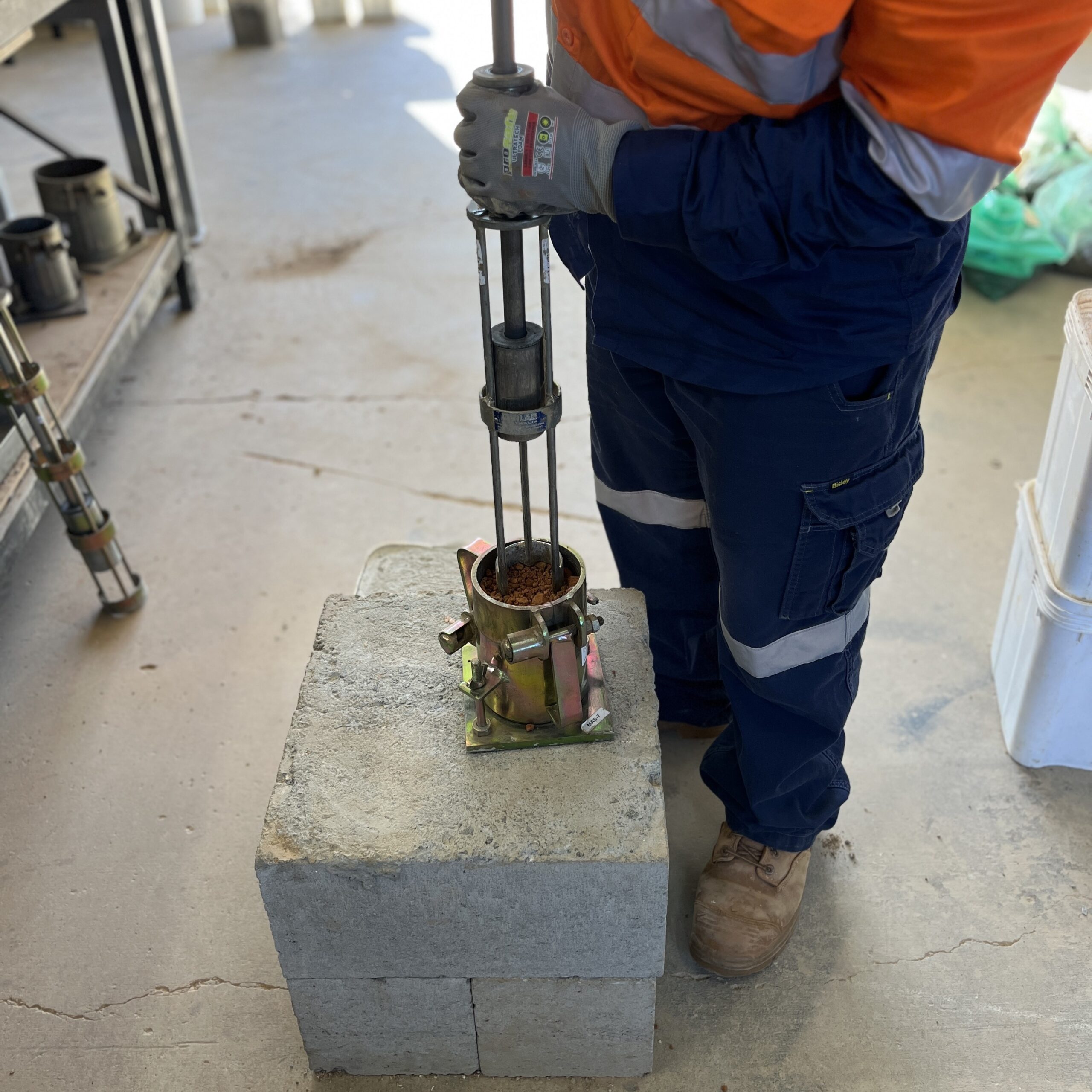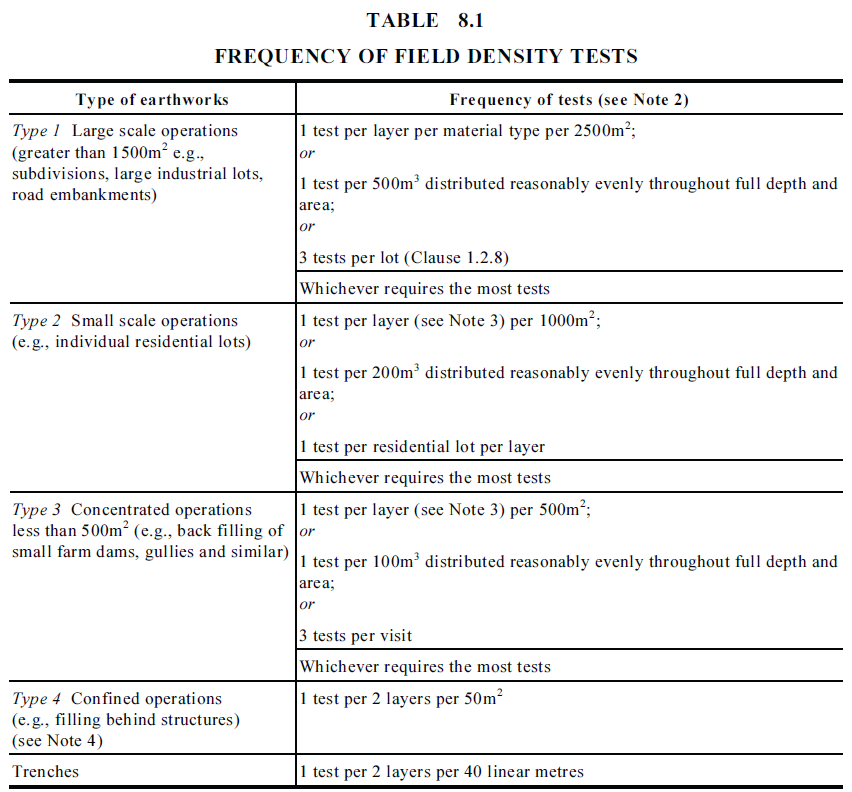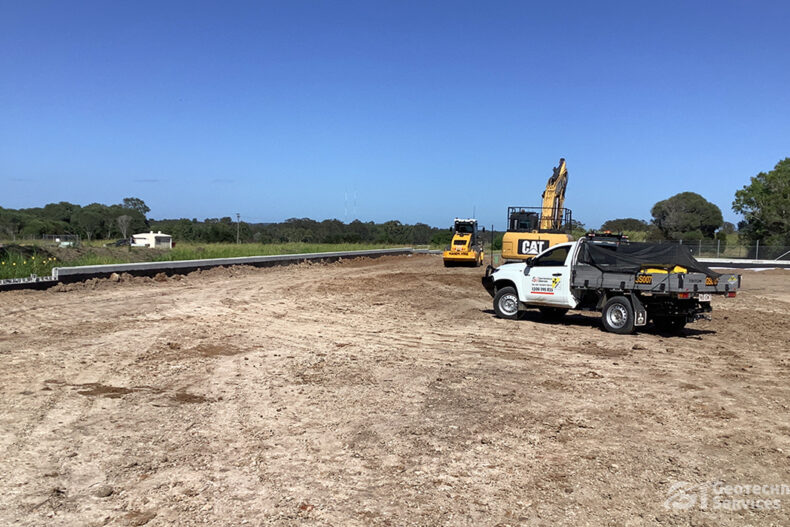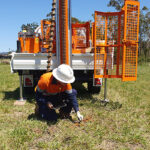Compaction testing is a critical process in civil engineering, ensuring the stability and durability of soil used in construction projects. This test measures the density of soil to verify that it meets the specific requirements for supporting structures such as buildings, roads, and bridges. Understanding the intricacies of compaction testing can help professionals ensure the longevity and safety of their projects.
What is soil compaction?
Soil compaction involves the application of mechanical force to densify soil by decreasing the void spaces between soil particles. This process compacts the particles together, reducing the gaps and increasing the soil’s unit weight. The maximum density is reached at the soil’s optimum moisture content (OMC).
By compacting the soil, the potential for settlement after constructing buildings, roads, runways, or carparks is significantly reduced. Appropriate compaction helps prevent premature pavement failure and minimises costly maintenance or repairs.
What is compaction testing?
Compaction testing evaluates the percentage to which soil has been compacted to reduce voids and increase density. This process is vital for enhancing the soil’s load-bearing capacity, reducing settlement, and improving resistance to water infiltration. Compacted soil provides a stable foundation, minimising the risk of structural failure.
Why is compaction testing important?
Stability and Load Bearing: Properly compacted soil can support structures without excessive settling, which can lead to uneven foundations and potential structural damage.
Durability: Compaction enhances the soil’s resistance to weathering and erosion, prolonging the life of the construction.
Water Resistance: Reducing the soil’s porosity helps in preventing water infiltration, which can weaken the soil structure and lead to issues such as swelling or shrinkage.
Methods of compaction testing / how do you test for compaction?
Several methods and standards are used to determine soil compaction, each suited to specific conditions and requirements.
Compaction Test (a.k.a Proctor Test in the US):  This is the most common method, involving the use of standard (AS 1289.5.1.1) or modified (AS 1289.5.2.1) compaction tests. Soil samples are compacted at various moisture levels to determine the optimal moisture content and maximum dry density.
This is the most common method, involving the use of standard (AS 1289.5.1.1) or modified (AS 1289.5.2.1) compaction tests. Soil samples are compacted at various moisture levels to determine the optimal moisture content and maximum dry density.
Sand Cone Method: This field test measures the density of soil in place. A hole is dug, and the excavated soil is weighed. Sand of known density is then used to fill the hole, and the volume of sand required is measured to calculate the soil’s density.
Nuclear Density Gauge: This non-destructive method uses a radioactive source to measure soil density and moisture content. It’s quick and efficient, making it ideal for field use.
Drive Cylinder Method: In this method, a cylinder is driven into the soil to extract a sample. The sample is then weighed and its volume measured to determine density.
Compaction Testing FAQs
1. What are the standards for compaction?
The required level of compaction is usually specified by project engineers and is often expressed as a percentage of the maximum dry density (MDD) obtained from the Compaction test. Common specifications range from 90% to 95% for general fill, and up to 100% for more critical applications.
2. What does 95% compaction mean?
Achieving 95% compaction means that the soil has been compacted to 95% of its maximum possible density as determined through compaction efforts. The maximum dry density (MDD) and optimum moisture content (OMC) are established in the laboratory, serving as benchmarks for field compaction. The 95% compaction level is commonly used as a target to ensure that construction projects have a stable foundation. The required compaction level is specified by the design engineer, based on the necessary bearing capacity to support the structural load safely.
3. How is optimal moisture content determined?
Optimal moisture content is the moisture level at which the soil achieves its maximum dry density. It is determined through the Compaction Test by compacting soil samples at different moisture levels and plotting the results to find the peak density.
4. Can all types of soil be compacted?
Most soils can be compacted, but the ease and effectiveness vary. Cohesive soils like clay require specific moisture conditions for effective compaction, whereas granular soils like sand and gravel compact more easily but require different techniques and equipment.
5. What equipment is used for compaction?
Compaction equipment varies based on soil type and project requirements. Common equipment includes vibratory rollers for granular soils, sheepsfoot rollers for cohesive soils, and tampers or rammers for confined areas.
6. How often should compaction testing be performed?
Compaction testing frequency depends on project specifications, but it is typically performed at regular intervals throughout the construction process to ensure consistent soil density.
As an example, per AS3798-2007 Table 8.1 shows the frequency of field density tests on earthworks for commercial and residential developments.

In regards to road construction projects, in Queensland for example, compaction testing method and frequency in most cases is conducted in accordance with MRTS04 (General Earthworks) and MRTS05 (Unbound Pavements).
Compaction testing is an indispensable part of construction, providing assurance that the soil foundation is capable of supporting the intended structures. By understanding the methods, standards, and importance of compaction testing, engineers and construction professionals can ensure the safety and longevity of their projects.
Require compaction testing for your next project? Call us on 1300 295 835 or request a quote.




